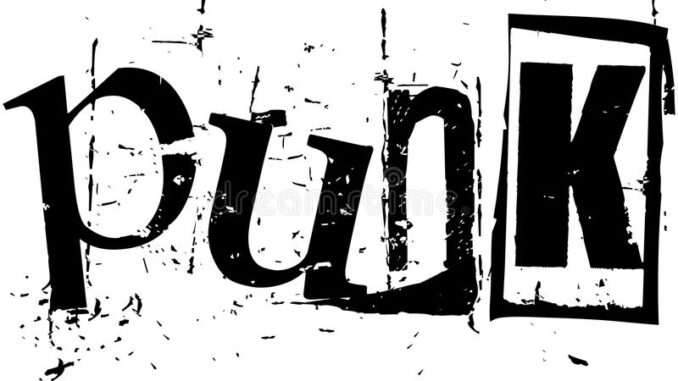
If you’re anything like me (I’m so, so sorry), you’ll have noticed an explosion in “–Punk” genres of fiction and games. Gone are the days where “Cyberpunk” stood alone as the only genre of its kind. Now new entries such as “Solarpunk” and “Dieselpunk” have entered the fray. How’s anyone supposed to keep track of them all? Lucky for you, I’ve put together this handy guide of some of the most prominent examples of “–Punk” genres to get you up to speed!
Cyberpunk
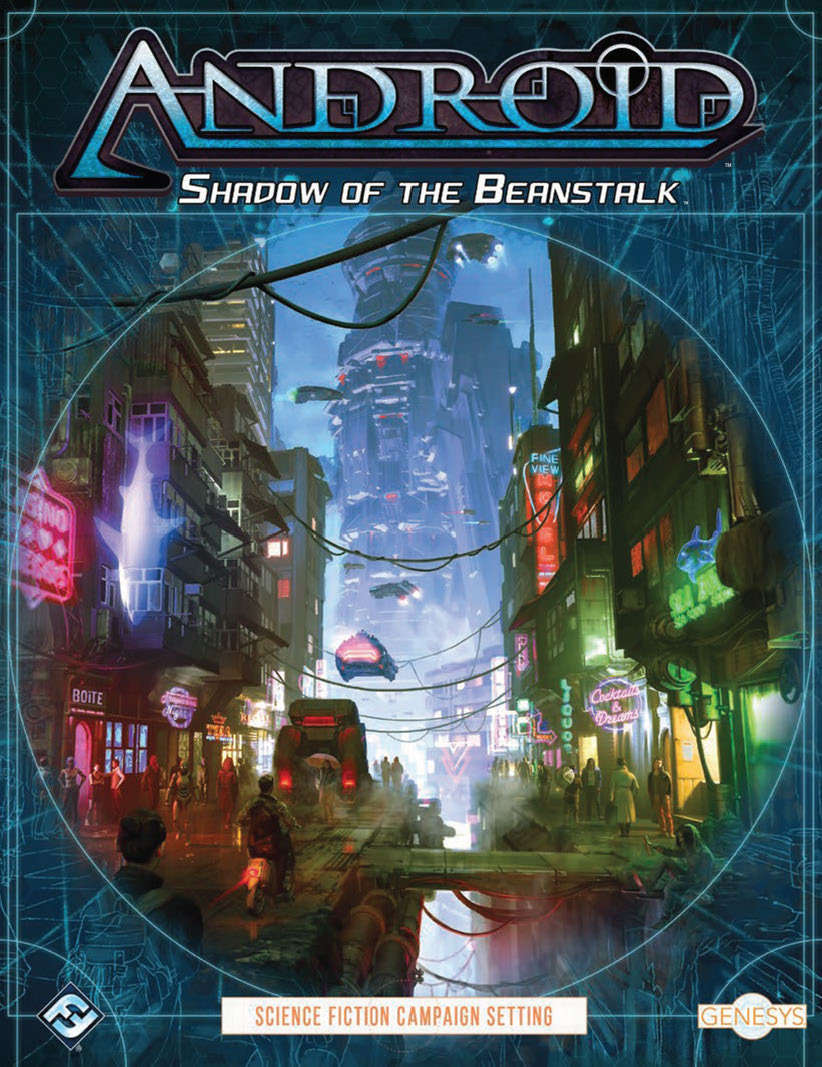 Let’s start with the grand-daddy of them all: Cyberpunk. Cyberpunk usually takes place in the near future (within a century of the present day or so). The setting is usually a hyper-urbanized, dystopian corporatocracy; states have lost their power to private mega-corporations who run the world to benefit themselves at the expense of everyone else. Digital technology also tends to play a heavy role, with the ability to plug-in to machines and walk around with virtual avatars. Nanotech can also be present, as well as (potentially) AI or semi-AI beings. The “Punks” are those outcasts on the edges of these societies, loners who struggle to survive either through hardened endurance or by actively fighting against the status quo.
Let’s start with the grand-daddy of them all: Cyberpunk. Cyberpunk usually takes place in the near future (within a century of the present day or so). The setting is usually a hyper-urbanized, dystopian corporatocracy; states have lost their power to private mega-corporations who run the world to benefit themselves at the expense of everyone else. Digital technology also tends to play a heavy role, with the ability to plug-in to machines and walk around with virtual avatars. Nanotech can also be present, as well as (potentially) AI or semi-AI beings. The “Punks” are those outcasts on the edges of these societies, loners who struggle to survive either through hardened endurance or by actively fighting against the status quo.
A good example of Cyberpunk can be found in FFG’s Shadow of the Beanstalk setting for Genesys, which takes place in the Android universe.
Steampunk
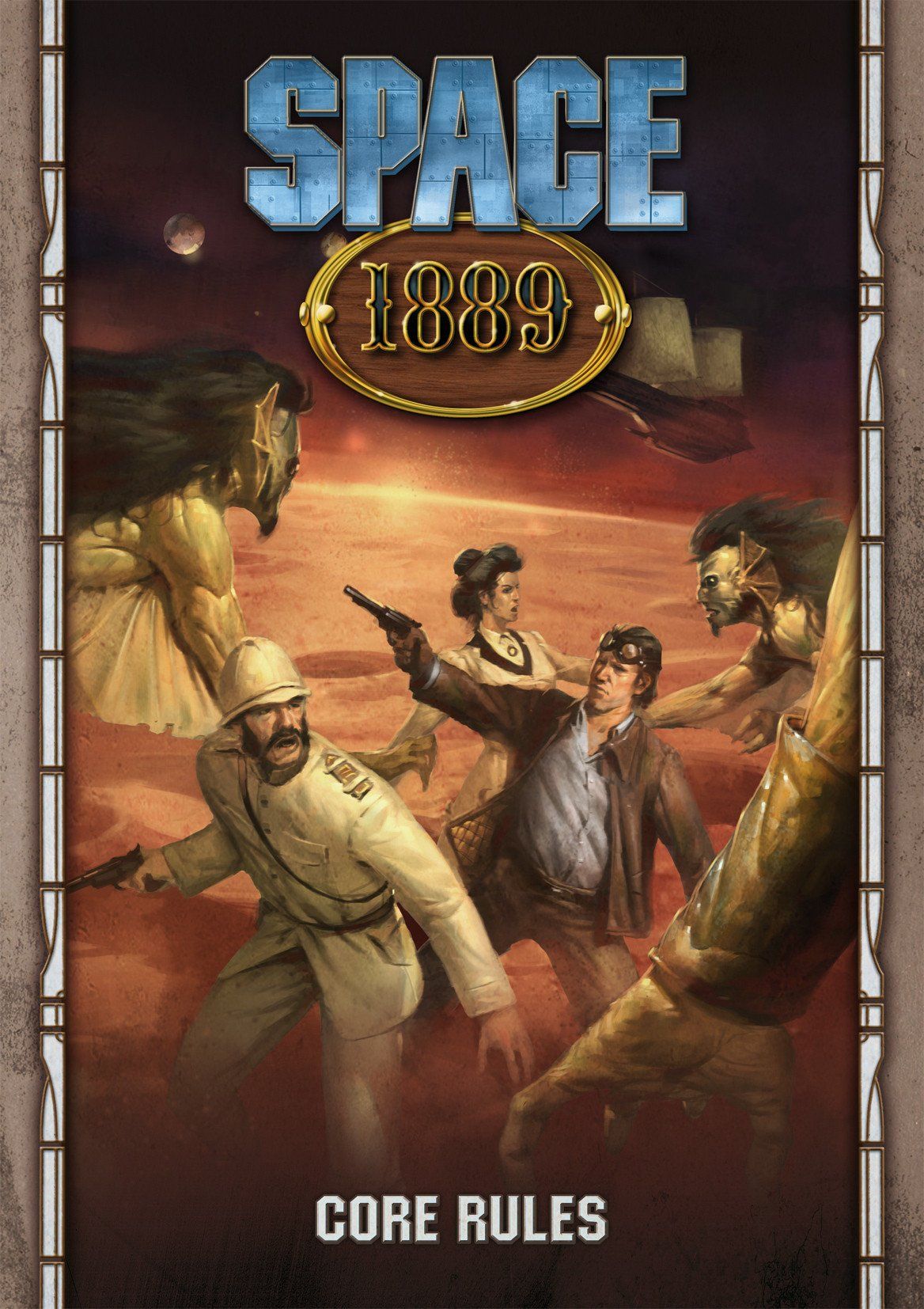 Perhaps the next-best known of the “–Punk” genres, Steampunk settings take place in a retrofuturistic version of the Age of Industrialization. Steam-powered inventions are extrapolated far beyond real-world historical achievements – steam-powered machine men (rather than robots), steam-powered vehicles (rather than petroleum-based), and steam-powered weapons all tend to be commonplace within these settings. The “punk” aspect of the genre is de-emphasized compared to Cyberpunk, focusing more on extrapolating a world that runs on advanced Steam-powered technologies. However, there are definitely works of fiction where protagonists are fighting against corrupt politicians, Victorian morals, or an entrenched class system.
Perhaps the next-best known of the “–Punk” genres, Steampunk settings take place in a retrofuturistic version of the Age of Industrialization. Steam-powered inventions are extrapolated far beyond real-world historical achievements – steam-powered machine men (rather than robots), steam-powered vehicles (rather than petroleum-based), and steam-powered weapons all tend to be commonplace within these settings. The “punk” aspect of the genre is de-emphasized compared to Cyberpunk, focusing more on extrapolating a world that runs on advanced Steam-powered technologies. However, there are definitely works of fiction where protagonists are fighting against corrupt politicians, Victorian morals, or an entrenched class system.
A notable example of Steampunk comes from the Space 1889 RPG. The latest edition runs on the Ubiquity Engine.
Dieselpunk
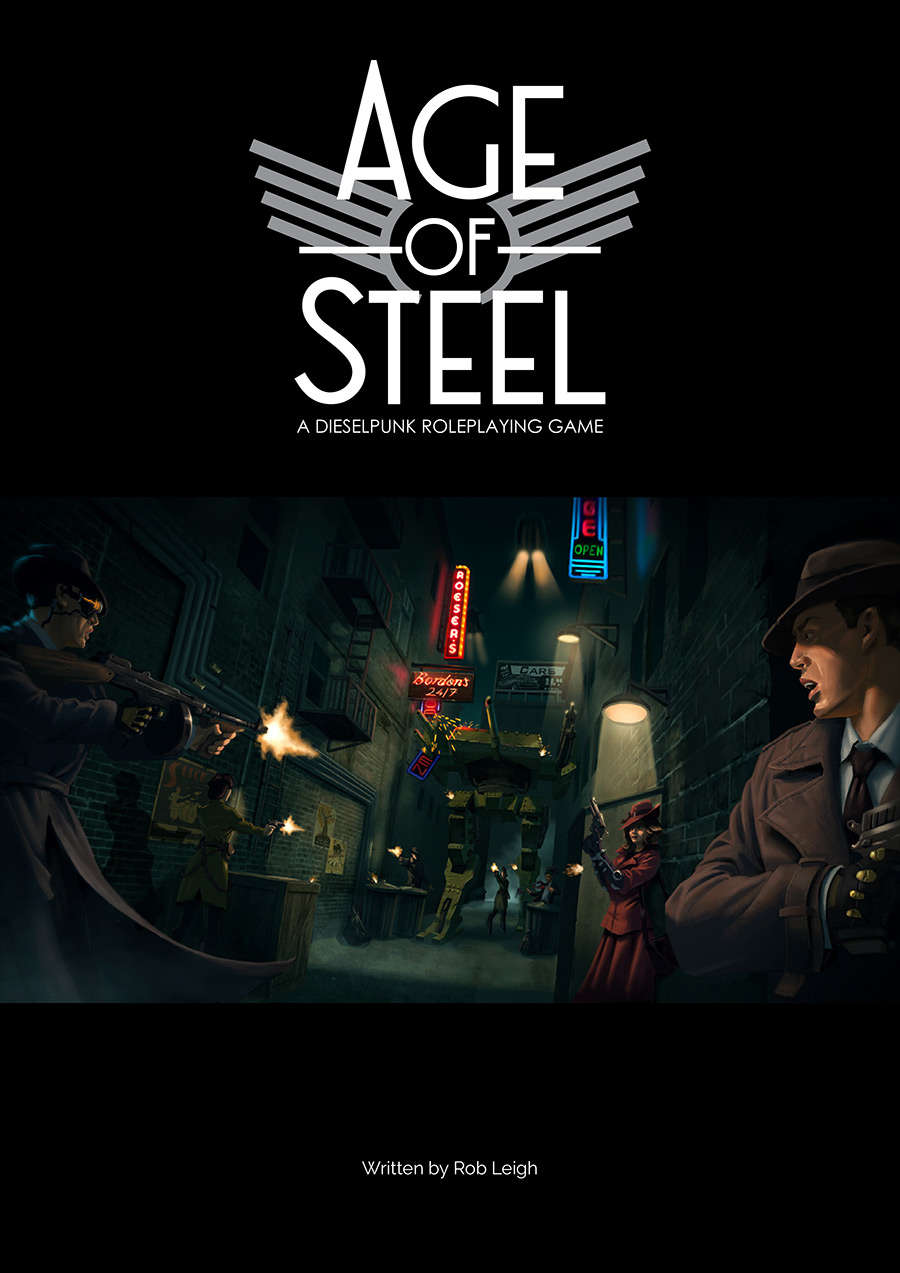 Getting into less familiar territory now, Dieselpunk is a genre that generally takes place between WWI and WWII. Like Steampunk, Dieselpunk tends to focus on the aesthetic and technology extrapolated from the age, particularly machines that run on Diesel fuel. In these settings, things like airships are commonplace, as may be jetpacks. Sometimes technology advances far beyond their historical limits, such as mecha robots powered by Diesel. Unlike in our real history, Dieselpunk often depict a much more optimistic version of the era; alternative histories where the WWI, the Great Depression, and/or WWII never happened are common. Still, there are plenty examples of Dieselpunk that take place in a darker setting, such as an alternate WWII where armies fight using mechanized robots. In this flavor of Dieselpunk, protagonists often take on the roles of Allied soldiers or Resistance fighters opposing Nazi forces.
Getting into less familiar territory now, Dieselpunk is a genre that generally takes place between WWI and WWII. Like Steampunk, Dieselpunk tends to focus on the aesthetic and technology extrapolated from the age, particularly machines that run on Diesel fuel. In these settings, things like airships are commonplace, as may be jetpacks. Sometimes technology advances far beyond their historical limits, such as mecha robots powered by Diesel. Unlike in our real history, Dieselpunk often depict a much more optimistic version of the era; alternative histories where the WWI, the Great Depression, and/or WWII never happened are common. Still, there are plenty examples of Dieselpunk that take place in a darker setting, such as an alternate WWII where armies fight using mechanized robots. In this flavor of Dieselpunk, protagonists often take on the roles of Allied soldiers or Resistance fighters opposing Nazi forces.
A prime example of Dieselpunk can be seen in the Age of Steel RPG.
Atompunk
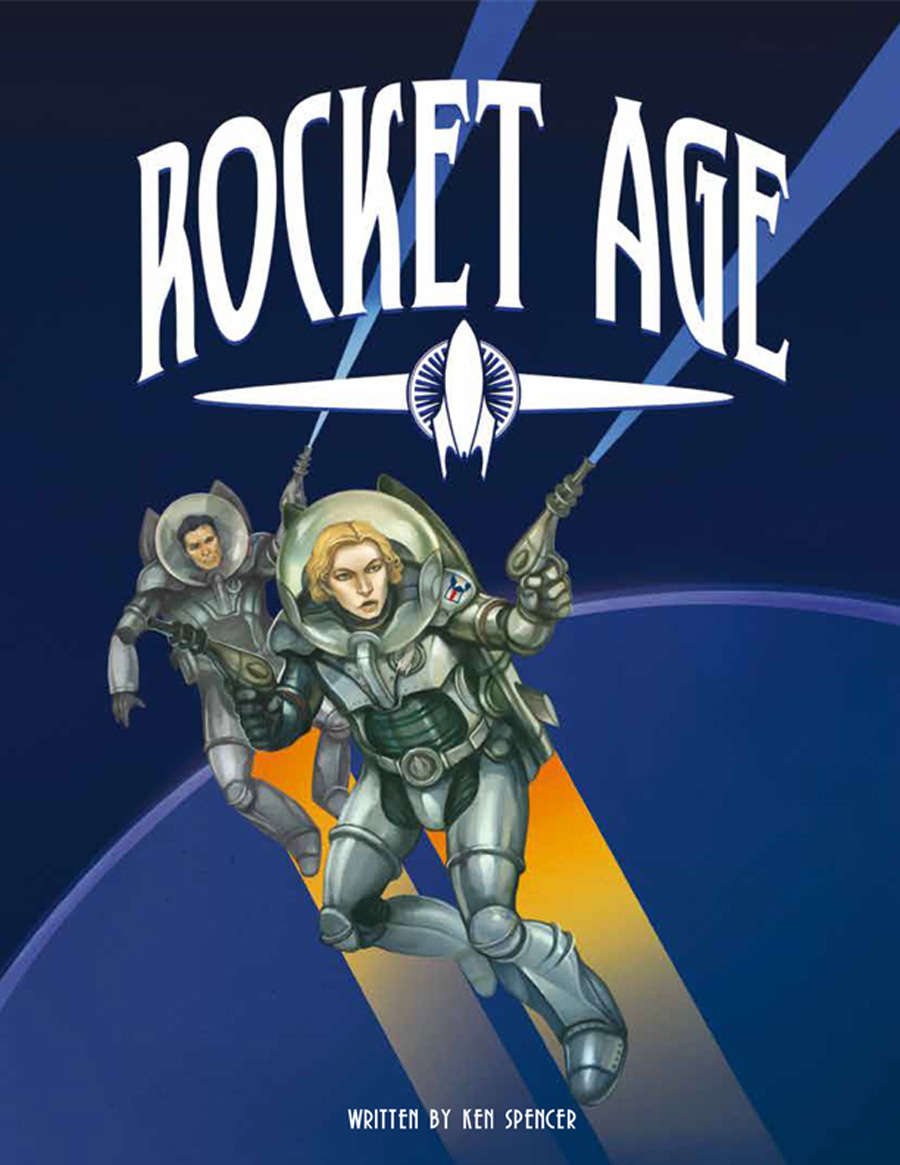 Atompunk takes its cue from the Atomic Era/Space Race and imagines a retro-futuristic world where we have flying cars, rayguns, “videophones,” and personal spacecraft. And of course, almost everything runs on atomic power. Contemporary concerns like Cold War espionage, the possibility of nuclear war, and the space race often play an important role in these settings. Much of pulp sci-fi could probably be classified as Atompunk. Atompunk works tend to be more focused on the aesthetic than the punk.
Atompunk takes its cue from the Atomic Era/Space Race and imagines a retro-futuristic world where we have flying cars, rayguns, “videophones,” and personal spacecraft. And of course, almost everything runs on atomic power. Contemporary concerns like Cold War espionage, the possibility of nuclear war, and the space race often play an important role in these settings. Much of pulp sci-fi could probably be classified as Atompunk. Atompunk works tend to be more focused on the aesthetic than the punk.
Atompunk elements are well-represented in the Rocket Age RPG.
Solarpunk
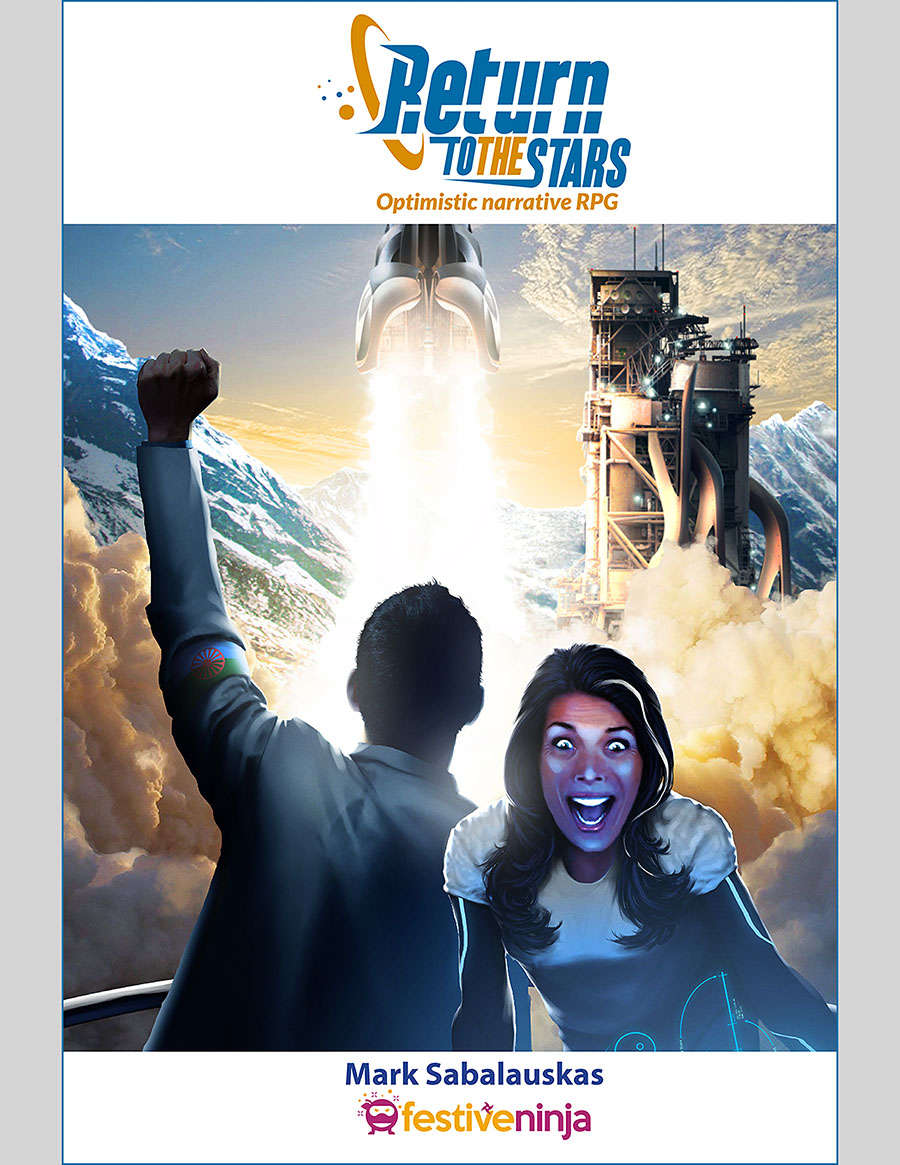 Now we come to the last item on our list, Solarpunk. Solarpunk is unique from many of the other “–Punk” genres in that it has an (almost?) exclusively optimistic bent. Solarpunk settings often take place in a world that runs on renewable energies such as Solar/Wind. Humans have learned to more or less use nature to our advantage and preserve it rather than exploit it. Global Warming is usually not a problem in these settings – either it has been resolved and/or its effects have been reversed, or the Climate Crisis never happened in the first place. Its a fairly Utopian “–Punk” genre, and often goes hand-in-hand with other ideas such as racial/gender/sexual equality, increased cultural awareness and tolerance, and other forms of social justice.
Now we come to the last item on our list, Solarpunk. Solarpunk is unique from many of the other “–Punk” genres in that it has an (almost?) exclusively optimistic bent. Solarpunk settings often take place in a world that runs on renewable energies such as Solar/Wind. Humans have learned to more or less use nature to our advantage and preserve it rather than exploit it. Global Warming is usually not a problem in these settings – either it has been resolved and/or its effects have been reversed, or the Climate Crisis never happened in the first place. Its a fairly Utopian “–Punk” genre, and often goes hand-in-hand with other ideas such as racial/gender/sexual equality, increased cultural awareness and tolerance, and other forms of social justice.
Unfortunately, there are currently no specifically-Solarpunk RPGs out there yet, as it’s a fairly new genre. However, it appears that a game named Solarpunk is in development. For the utopian/optimistic aspects of Solarpunk, you can also check out Return to the Stars, which classifies itself as “Hopepunk.”
Well, I hope you have a better idea about some of the more popular “–Punks” out there. This was by no means an exhaustive survey, as new “–Punk” genres seem to be popping up every day. But I think I’ve provided a good enough jumping-off point that you should have an informed perspective as you explore more.
Do you have thoughts or questions about the article or suggestions for future content? Leave a comment below or drop me a line at jtdimino@d20radio.com.
